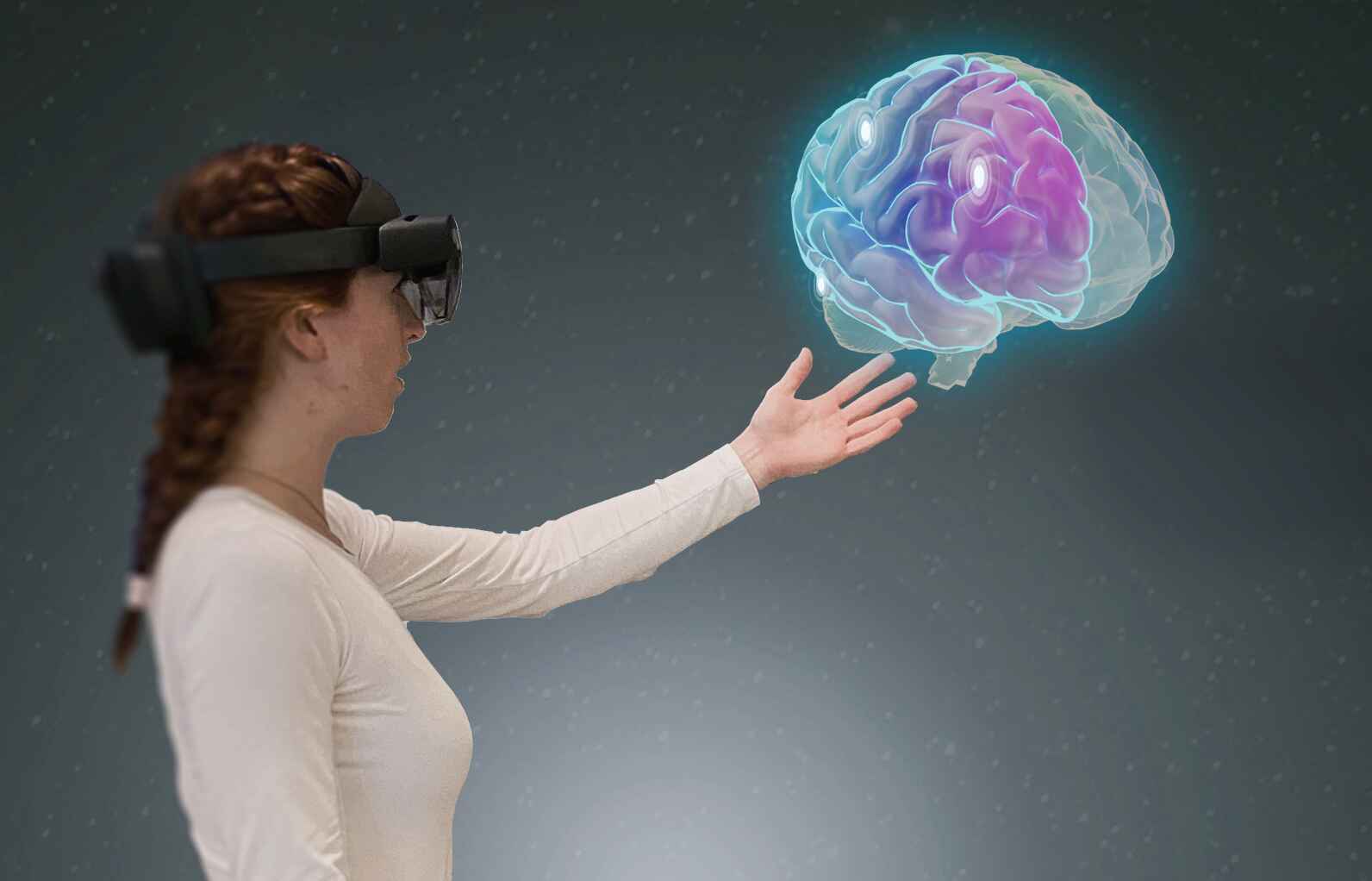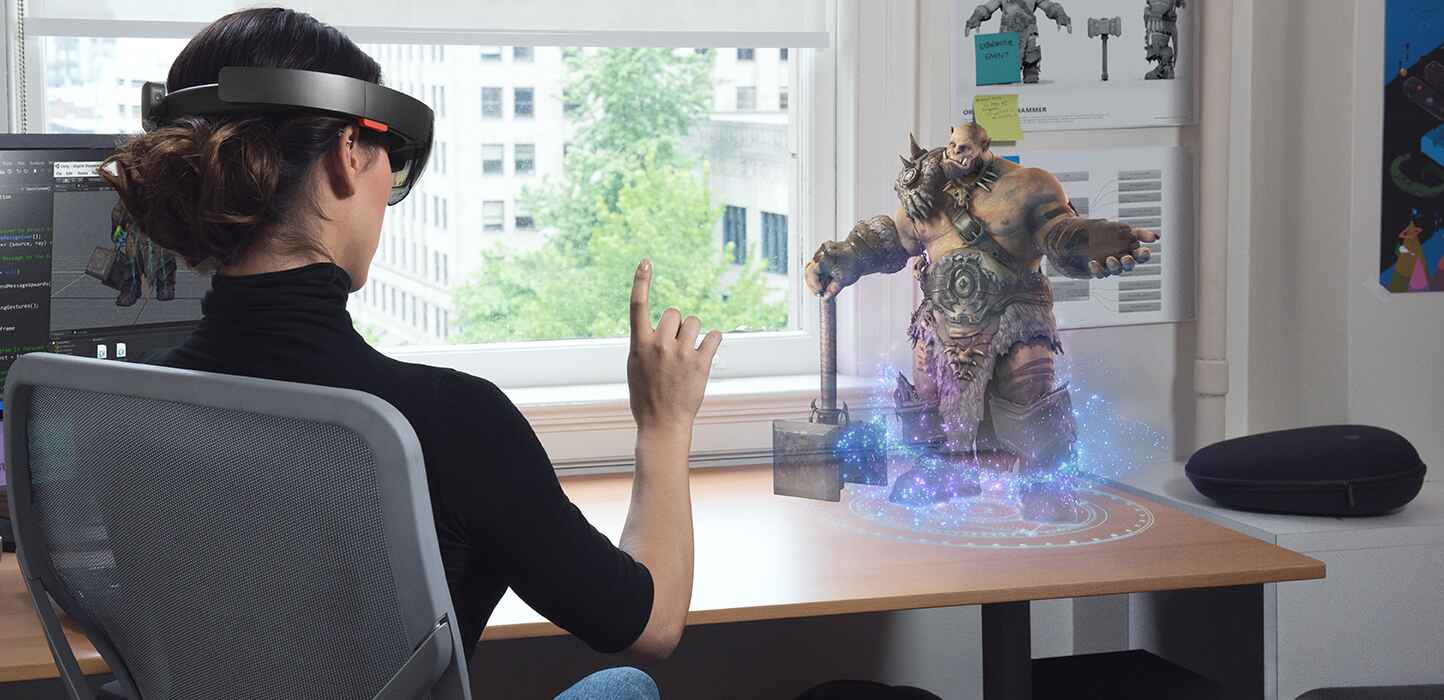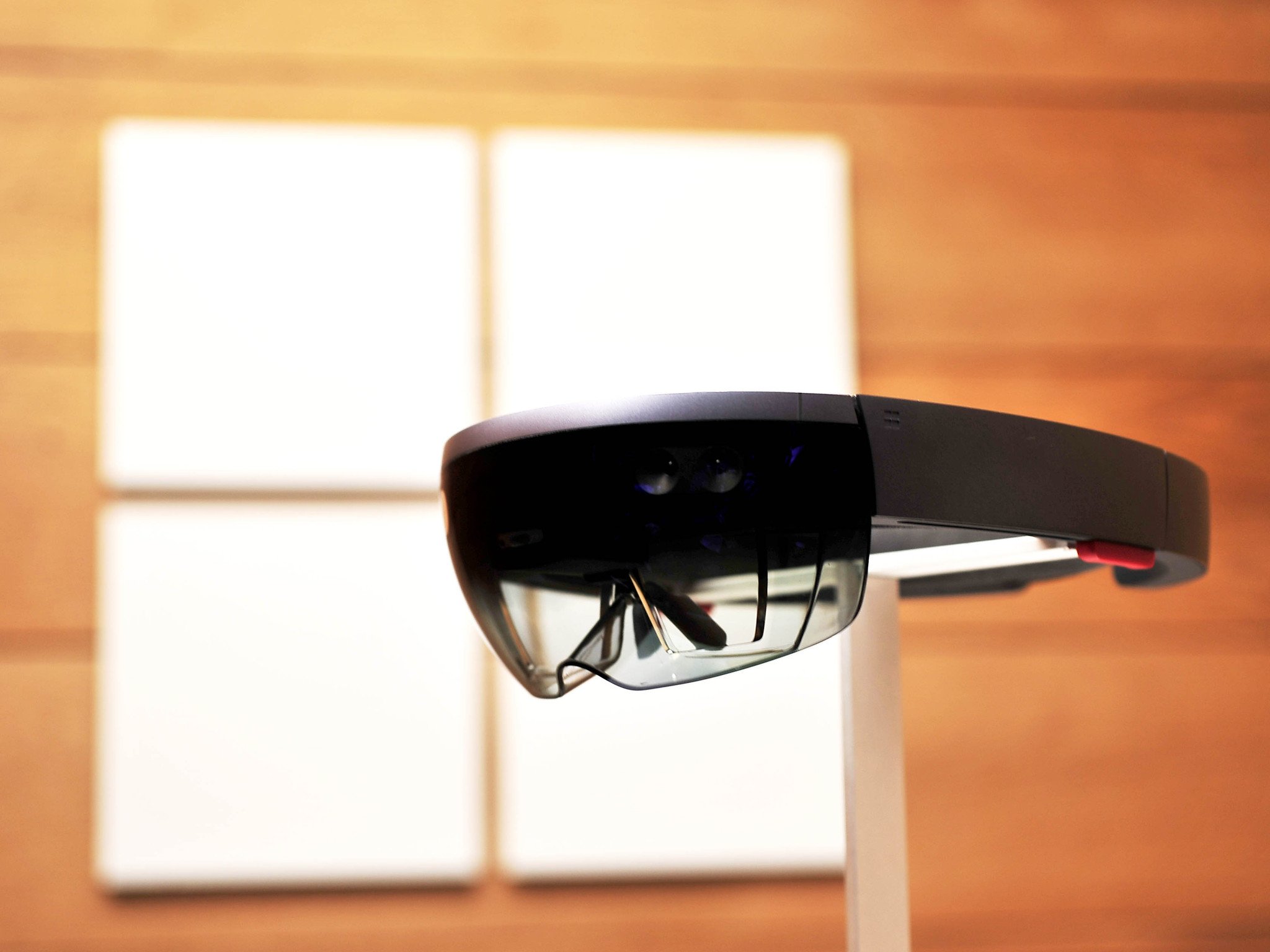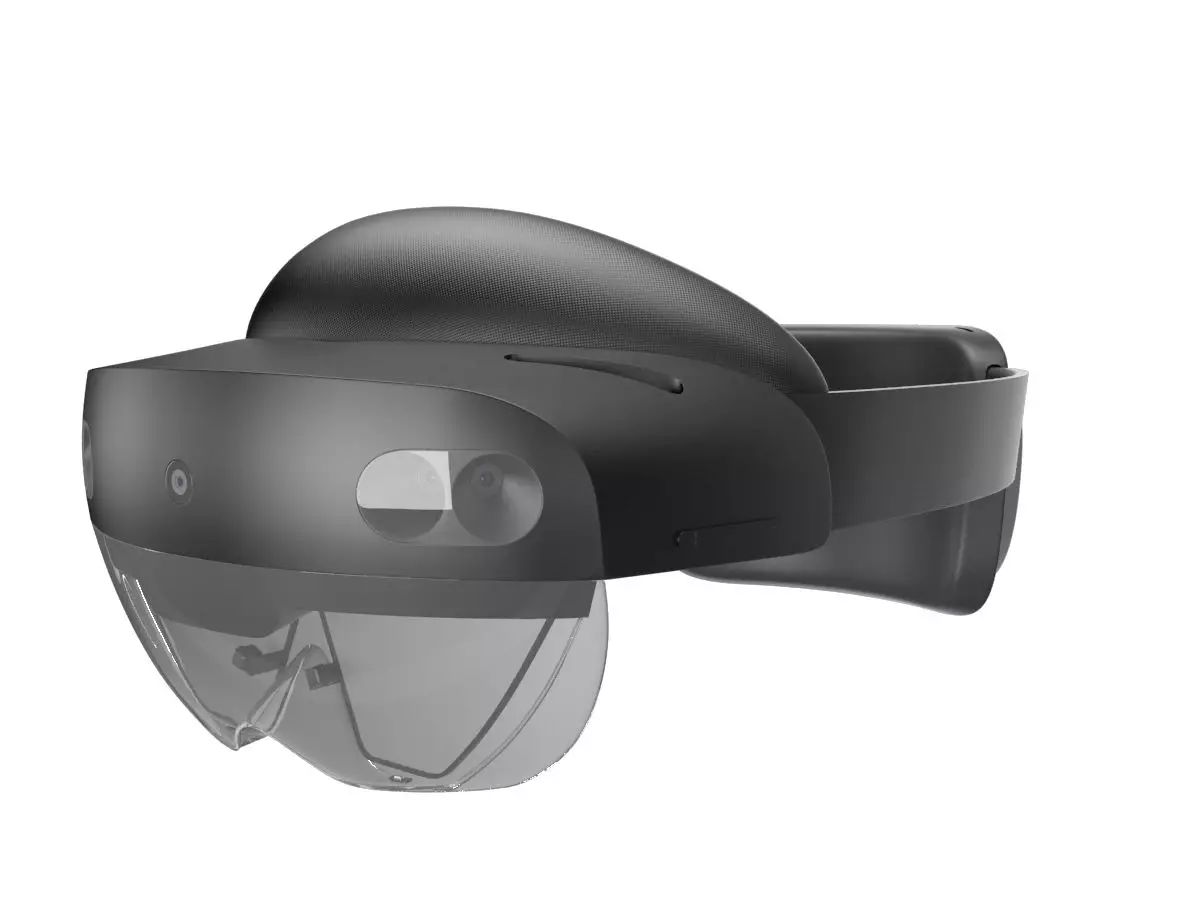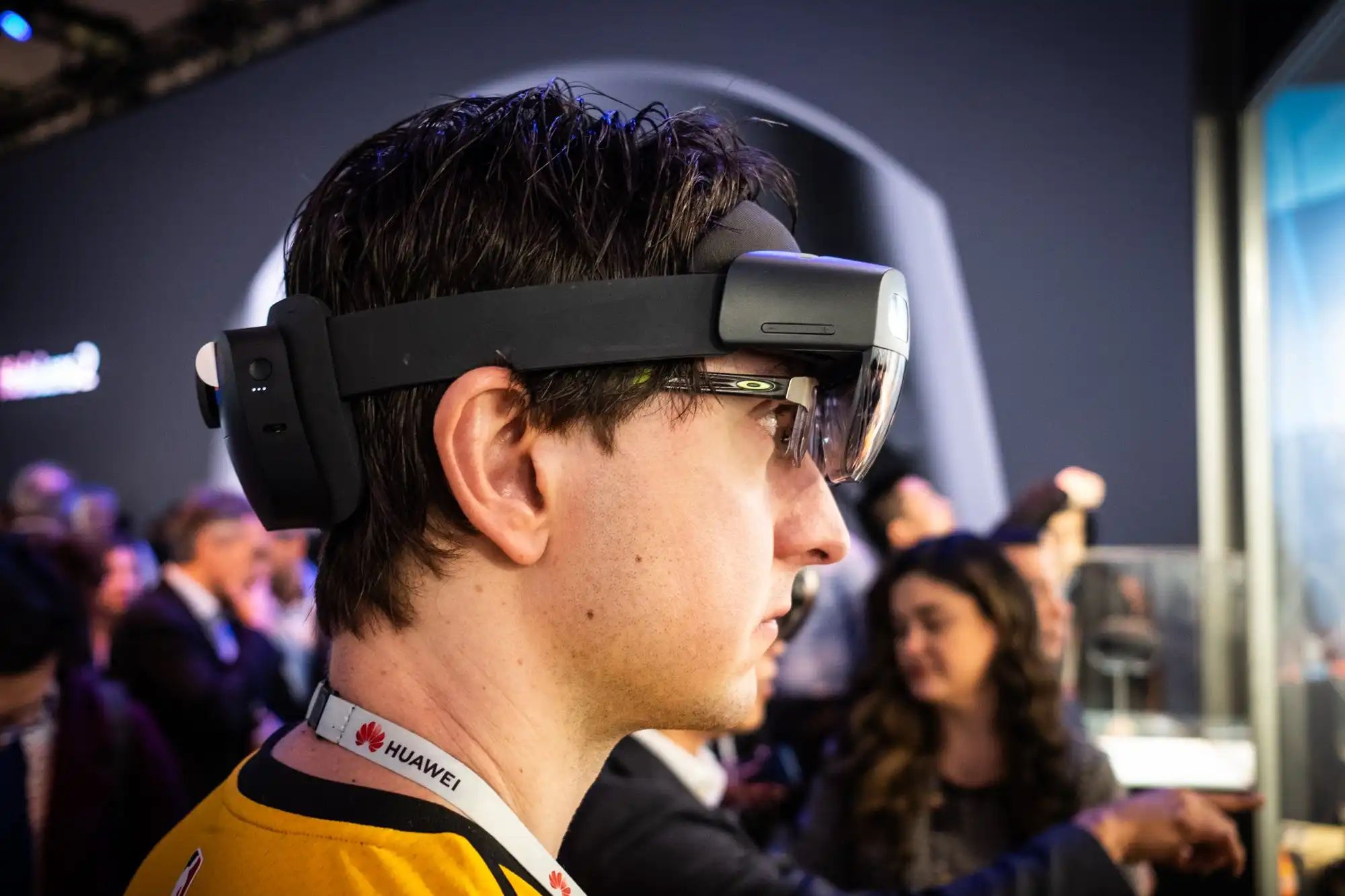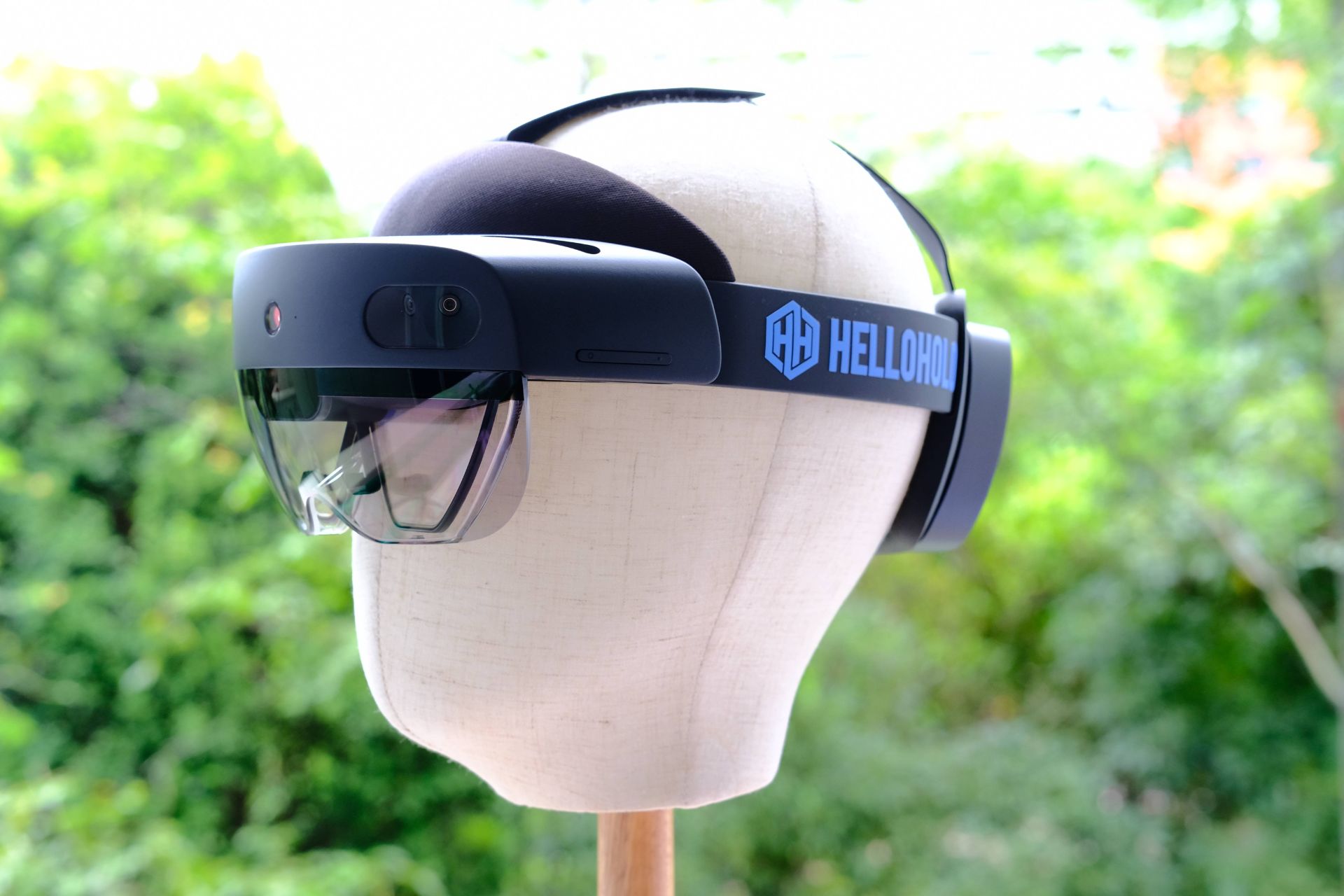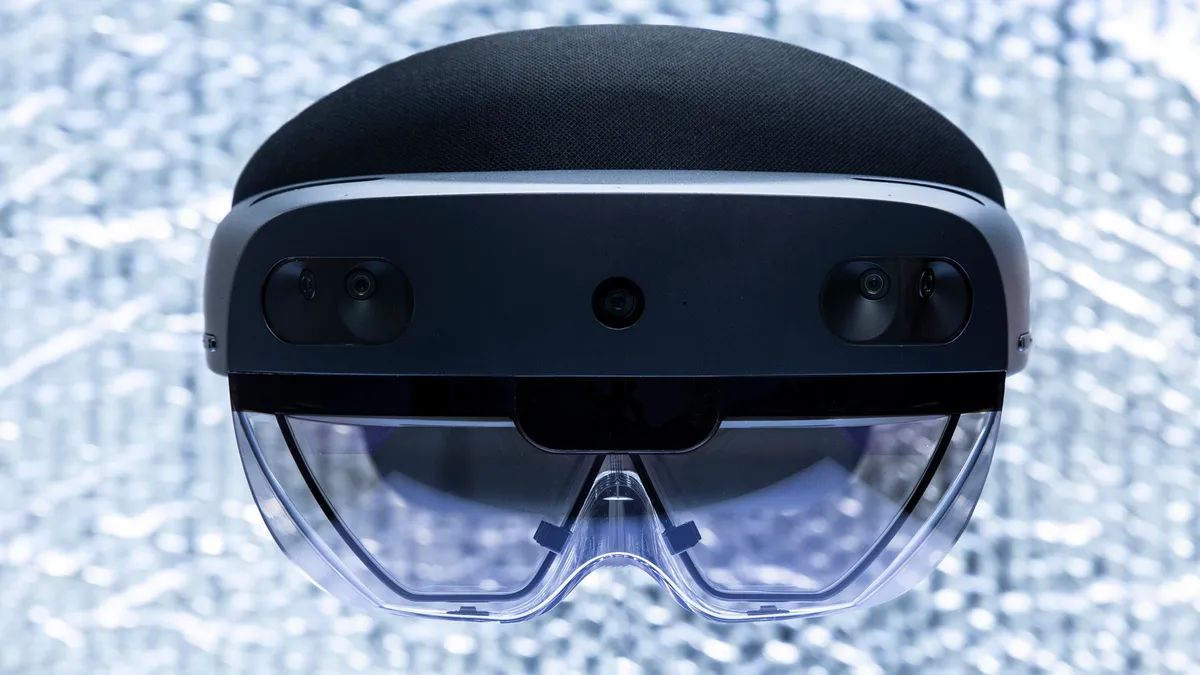Introduction
Introducing the HoloLens: A glimpse into the future of augmented reality
Augmented reality has come a long way in recent years, and one of the most exciting advancements in this field is Microsoft’s HoloLens. The HoloLens is a cutting-edge device that seamlessly blends the real world with virtual elements, allowing users to interact with digital holograms in their physical environment.
Since its announcement, the HoloLens has generated immense curiosity and anticipation among technology enthusiasts, developers, and consumers alike. The idea of donning a sleek headset and having holographic content projected onto our surroundings seems like something straight out of a science fiction movie.
The HoloLens promises to revolutionize the way we work, play, and communicate. With its potential applications ranging from gaming and entertainment to architecture, design, and healthcare, it has garnered attention from a wide range of industries. The possibilities seem endless, and the excitement surrounding its release continues to grow.
In this article, we will explore the journey of the HoloLens, from its initial release to its current availability and future prospects for consumers. Join us as we dive into the evolution of this groundbreaking technology and uncover when the HoloLens might become available for everyday consumers.
Before we proceed further, let’s take a step back and understand the different editions of the HoloLens that have been released so far.
The Initial Release of HoloLens
Embarking on a new era: The first-generation HoloLens
The journey of the HoloLens began in January 2015 when Microsoft unveiled its first-generation augmented reality headset to the world. This momentous occasion marked a significant milestone in the development of mixed reality technology.
The initial release of the HoloLens was targeted towards developers and aimed to foster creativity and innovation in the field of augmented reality. Microsoft recognized the importance of collaboration and partnered with a select group of developers to explore the potential applications of the HoloLens in various industries.
The first-generation HoloLens introduced users to a whole new level of mixed reality experience. The headset was equipped with built-in sensors, cameras, and speakers, allowing users to interact with holographic content seamlessly. With gesture recognition, voice commands, and gaze tracking, the HoloLens offered an intuitive and immersive way to engage with digital holograms.
During its initial release, the HoloLens garnered a lot of attention and excitement from the developer community. Developers were given access to a dedicated development kit, which included tools and resources to create their own augmented reality applications. This early adoption by developers played a critical role in shaping the future of the HoloLens and expanding its potential use cases.
While the first-generation HoloLens held immense promise, it was still considered a prototype device with limitations. The field of augmented reality was still in its early stages, and there were challenges to overcome in terms of form factor, field of view, and processing power. Despite these limitations, the HoloLens received positive feedback from developers and early adopters, setting the stage for further advancements in the technology.
With the successful launch of the initial HoloLens, Microsoft demonstrated its commitment to pushing the boundaries of augmented reality and bringing this transformative technology to the mainstream. The journey had just begun, and there were more exciting developments on the horizon.
HoloLens Development Edition
Paving the way for innovation: The HoloLens Development Edition
Following the initial release of the HoloLens, Microsoft recognized the importance of empowering developers to push the boundaries of augmented reality. In response to the overwhelming demand from developers and enthusiasts, Microsoft introduced the HoloLens Development Edition.
The HoloLens Development Edition was an exclusive version of the headset, specifically designed for developers to unleash their creativity and explore the full potential of augmented reality. It provided developers with all the tools and resources they needed to build immersive and groundbreaking applications.
Released in March 2016, the HoloLens Development Edition offered an upgraded experience compared to the initial release. It featured improvements in comfort, performance, and overall functionality. Developers were able to take advantage of the device’s full capabilities and create rich holographic experiences that could be seamlessly integrated into the real world.
Microsoft’s approach with the HoloLens Development Edition was to foster a strong developer community and create an ecosystem around augmented reality. The company organized hackathons, workshops, and conferences to provide developers with the necessary training and support to create innovative applications.
Through the HoloLens Development Edition, developers were able to explore various industries, including gaming, education, architecture, and healthcare. They developed applications that enabled virtual collaboration, interactive learning experiences, immersive entertainment, and even medical simulations.
The HoloLens Development Edition was not just a tool for developers but also a medium for feedback and improvement. Microsoft actively sought input from developers to enhance the hardware, software, and overall user experience. This iterative approach ensured that the HoloLens evolved and improved based on real-world usage and developer insights.
The HoloLens Development Edition played a crucial role in expanding the possibilities of augmented reality and paving the way for future advancements. It laid the foundation for the commercial release of the HoloLens and established a strong developer community that continues to drive innovation in mixed reality.
HoloLens Commercial Suite
Unlocking the potential for enterprise: The HoloLens Commercial Suite
Recognizing the immense potential of augmented reality in the enterprise market, Microsoft introduced the HoloLens Commercial Suite. This specially designed package aimed to bring the power of the HoloLens to businesses and organizations, enabling them to enhance their operations, improve productivity, and drive innovation.
The HoloLens Commercial Suite, launched in October 2016, provided enterprise-focused features and support to meet the unique requirements of businesses. It included enterprise-grade security and management capabilities, such as Azure Active Directory integration, mobile device management, and Windows Update for Business. These features ensured that the HoloLens could be seamlessly integrated into existing IT infrastructures and managed effectively within enterprise environments.
In addition to the enhanced security and management features, the HoloLens Commercial Suite offered enterprise-specific deployment and servicing options. It provided robust device enrollment and configuration tools, as well as advanced customization capabilities, enabling organizations to tailor the HoloLens to their specific needs.
The HoloLens Commercial Suite opened up new possibilities for businesses across various industries. Companies began exploring the potential of augmented reality for training and education, remote collaboration, product design and visualization, and complex task assistance.
One area where the HoloLens Commercial Suite found significant utility was in the field of architecture and construction. Architects could now use the HoloLens to create virtual 3D models of designs and overlay them onto physical spaces, enabling clients and stakeholders to visualize projects in real-time. This streamlined the design iteration process and improved communication between all parties involved.
In the healthcare sector, the HoloLens Commercial Suite revolutionized medical training and patient care. Surgeons used the device to visualize patient data, plan complex surgeries, and even perform virtual simulations. This technology not only enhanced the accuracy and efficiency of procedures but also improved patient outcomes.
The HoloLens Commercial Suite marked a significant milestone in the adoption of augmented reality by businesses. By addressing the unique needs of enterprises and providing value-driven solutions, Microsoft further solidified the HoloLens as a transformative tool for the industry.
HoloLens 2 Debuts
The next chapter: Introducing the HoloLens 2
In February 2019, Microsoft unveiled the highly anticipated HoloLens 2, taking augmented reality to new heights. The second-generation headset showcased significant improvements in terms of comfort, field of view, and overall performance, solidifying its position as a leading device in the augmented reality space.
One of the most notable enhancements of the HoloLens 2 was its ergonomic design. Microsoft focused on improving the comfort and wearability of the headset, making it more lightweight and balanced. The device featured an adjustable headband and a flip-up visor, enabling users to easily switch between augmented reality experiences and the real world.
Another major advancement in the HoloLens 2 was the expanded field of view. Users experienced a larger window into the holographic world, allowing for a more immersive and natural visual experience. This improvement significantly enhanced the usability of the device and made interactions with holograms feel even more seamless.
Under the hood, the HoloLens 2 boasted enhanced processing power and AI capabilities. It was equipped with a custom-built holographic processing unit (HPU 2.0) and an Azure-enabled AI coprocessor, enabling faster and more efficient rendering of holographic content. This resulted in smoother interactions and improved realism in augmented reality experiences.
The HoloLens 2 also introduced a breakthrough in user interaction with the implementation of hand tracking and eye tracking. Users could now interact with holographic content using natural hand gestures, eliminating the need for external controllers. Eye tracking allowed for more intuitive and precise targeting of holograms, providing a seamless and responsive user experience.
With its enhanced features and capabilities, the HoloLens 2 opened up new possibilities for industries and professionals. The device found applications in training and simulations, remote assistance, product design, and more. Companies across various sectors, including automotive, manufacturing, and retail, embraced the HoloLens 2 for its potential to streamline workflows, reduce errors, and increase productivity.
The debut of the HoloLens 2 marked a significant milestone in the adoption of augmented reality. Microsoft demonstrated its commitment to pushing the boundaries of the technology while addressing the needs and feedback from its growing user base.
Current Availability of HoloLens
Bringing the future to the present: HoloLens availability today
The HoloLens has come a long way since its initial release, and its availability has expanded over the years. As of now, the HoloLens is commercially available, primarily targeting enterprise customers and developers.
Microsoft has made the HoloLens available in several countries, including the United States, Canada, European Union countries, Australia, New Zealand, Japan, China, and others. Availability may vary depending on the specific region and market.
For enterprise customers, Microsoft offers the HoloLens 2 directly through its official website and authorized resellers. Businesses can choose from different packages, including the HoloLens 2 with the Commercial Suite, which provides additional enterprise-focused features, management tools, and support.
In addition to enterprise customers, Microsoft continues to prioritize developers by offering the HoloLens 2 Development Edition. This edition provides developers with access to the necessary tools and resources to create innovative and immersive augmented reality applications.
While the current availability is primarily focused on enterprise and developer editions, there is ongoing speculation and anticipation regarding when the HoloLens will become available to everyday consumers. Although Microsoft has not provided a specific timeline, the increasing interest and demand for augmented reality technology suggest that consumer availability could be on the horizon.
Microsoft has been working diligently to improve the HoloLens technology with each iteration, addressing feedback and refining the user experience. As the technology continues to evolve and the market demand grows, it is likely that Microsoft will eventually introduce a consumer version of the HoloLens.
Until then, businesses and developers can continue to explore the opportunities presented by the HoloLens, leveraging its capabilities to drive innovation and transform industries. The availability of the HoloLens to enterprise customers and developers showcases Microsoft’s commitment to advancing augmented reality and creating a robust ecosystem around the technology.
As the HoloLens gains traction and adoption expands, there is an increasing possibility that we will see a future where everyday consumers can experience the wonders of augmented reality with their own HoloLens device.
The Future of HoloLens for Consumers
Transforming daily life: The potential of HoloLens for everyday consumers
While the current availability of the HoloLens is primarily focused on enterprise customers and developers, the future of HoloLens for everyday consumers holds immense potential. As augmented reality technology continues to evolve and gain popularity, it is only a matter of time before the HoloLens becomes more accessible to the wider consumer market.
The HoloLens has already demonstrated its capabilities in various industries, such as gaming, entertainment, education, and healthcare. However, its impact on everyday life has the potential to be even more transformative. Imagine being able to seamlessly integrate digital information into your daily activities, from shopping and socializing to navigating and learning.
In the realm of gaming and entertainment, the HoloLens has the potential to revolutionize the way we experience and interact with digital content. With its ability to project holographic experiences in our physical space, we could witness a new era of immersive gaming, where virtual objects and characters seamlessly blend with our environment.
Education could also benefit greatly from the widespread adoption of the HoloLens by consumers. Imagine students being able to explore historical landmarks, witness scientific phenomena, and take part in virtual simulations of real-world scenarios, all within the confines of their own classroom.
The HoloLens has the potential to enhance our daily activities beyond entertainment and education. It could revolutionize how we shop, allowing us to visualize products in our own space before making a purchase. We could try on virtual clothing, place furniture in our rooms to see how it fits, and even test drive cars without leaving our homes.
Navigation and wayfinding could also be transformed with the widespread adoption of the HoloLens by consumers. Imagine having interactive, real-time directions projected directly onto our surroundings, guiding us to our desired destinations with ease.
While consumer availability of the HoloLens is yet to be fully realized, it is evident that the potential benefits for everyday consumers are vast. Microsoft continues to invest in research and development to enhance the HoloLens technology, making it more affordable, comfortable, and intuitive for a wider audience.
As augmented reality technology advances and becomes more ingrained in our daily lives, the future of the HoloLens for consumers appears promising. While it may take some time before the device becomes widely available to the general public, the transformative potential it holds suggests that everyday consumers may soon have the opportunity to experience the wonders of augmented reality in their own homes and communities.
Conclusion
Embracing a new reality: The future of HoloLens
The HoloLens has come a long way since its initial release, taking augmented reality to new heights and captivating the imagination of technology enthusiasts, developers, and businesses. From its humble beginnings as a developer-focused device to its current availability in the enterprise and developer market, the HoloLens has paved the way for a future where augmented reality becomes an integral part of our daily lives.
Through the HoloLens, Microsoft has showcased the transformative potential of augmented reality across various industries. From gaming and entertainment to education, healthcare, and beyond, the HoloLens has opened up new possibilities for innovation and improved experiences.
The journey of the HoloLens has been one of continuous innovation and refinement. Each iteration has brought improvements in comfort, field of view, processing power, and user interaction, making the technology more accessible and immersive. The release of the HoloLens 2 further solidified Microsoft’s commitment to advancing augmented reality and accommodating the needs of businesses and developers.
While the current availability of the HoloLens is primarily focused on enterprise customers and developers, the potential for broader consumer adoption is on the horizon. As augmented reality technology continues to evolve and gain popularity, it is likely that we will witness a future where everyday consumers can experience the wonders of augmented reality in their daily lives.
From gaming and entertainment to shopping, education, navigation, and beyond, the HoloLens has the potential to seamlessly integrate digital information into our surroundings, enhancing how we interact with the world around us.
As Microsoft continues to invest in research and development, we can expect further advancements in the HoloLens technology, making it more affordable, comfortable, and accessible to a wider audience. The future of HoloLens holds immense promise, and as consumers, developers, and businesses embrace this new reality, we can look forward to a future where augmented reality becomes an integral part of our daily lives.
The journey of the HoloLens is far from over. As technology continues to evolve and improve, we can expect further advancements in augmented reality and the HoloLens itself. The possibilities are endless, and as consumers, developers, and enterprises continue to embrace this transformative technology, we can look forward to a future where the boundaries between the physical and digital worlds blur, and the full potential of augmented reality is realized.







